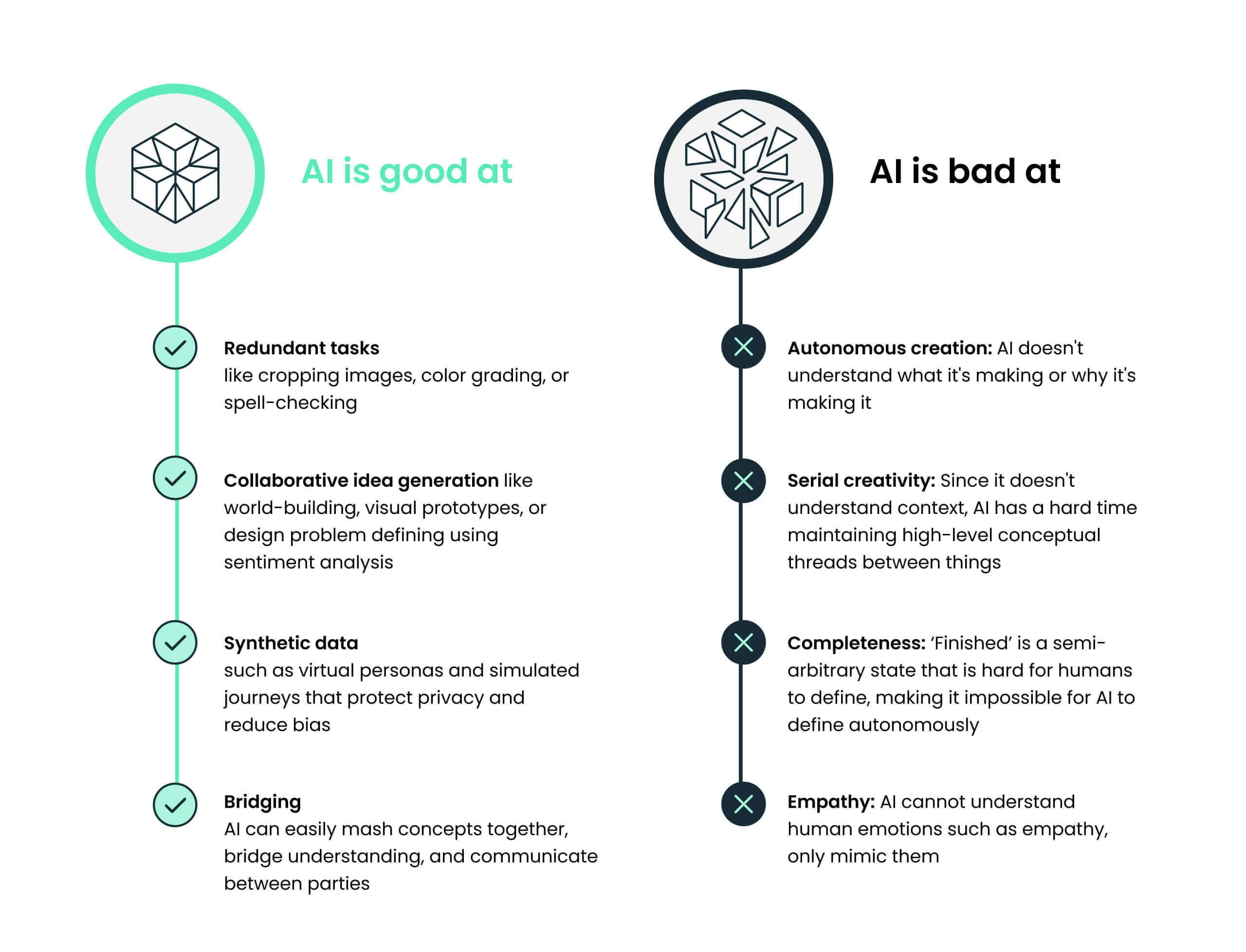AI use cases for the digital workplace

Discover which business processes are ripe for these powerful tools
Artificial intelligence is officially on the business agenda. In a recent Gartner poll of more than 1,400 executive leaders, 45% said they are piloting generative AI (a type of AI that creates original content), while another 10% said the technology is already in use.
As we mentioned in our AI primer, what makes this new wave of AI so enticing is the ease of use these tools provide. No longer limited to the domain of computer scientists, any user can quickly experiment with AI applications like OpenAI’s ChatGPT and Google’s Bard. However, for enterprises wary of sharing sensitive data on public platforms, the race toward AI is more cautious and measured than hype-makers would have us believe. That’s because rapid implementation comes with risk.
In one highly publicized case, Samsung banned the use of ChatGPT by employees after an engineer leaked sensitive internal source code on the platform. As it happens, a couple of months later, OpenAI announced its ChatGPT Enterprise offering. It’s just one of a number of emerging solutions coming to market promising private AI development environments that support enterprise-grade compliance and security standards.
As business and IT leaders move beyond “bright shiny object” mode and look to gain efficiency and value from AI, one of the first steps is finding your organization’s sweet spot where your business needs and objectives align with use cases that AI is reliably capable of.
What is AI good for?
Although AI has made significant progress, it’s important to remember that the technology is nowhere near a replacement for human intelligence. So what can we use AI for? In the business environment, we can use AI to efficiently address two specific pain points in knowledge work: human capacity and capability constraints.
Regarding capacity, AI can handle busy work that would otherwise take time away from more focused work.

So how is AI being used today? Here are some common, high-level use cases:
AI for content creation and simplification
According to a recent survey by Business.com, the most popular application of ChatGPT in the workplace is for improving written communication, such as emails and reports. While AI is not capable of replacing the critical thinking of a human writer, there are ways that content creators can use AI’s next-word prediction to work faster and smarter, such as overcoming writer’s block.
The latest AI is also remarkably capable of distilling content into summaries and topic outlines, and can even rephrase complex information using much simpler langage. This capability is advancing quickly, as the newest version of ChatGPT, GPT-4 Turbo, can support longer documents — around 300 pages of text.
Another popular tool, Notion, used for project management and shared documentation, integrated AI-powered features earlier this year. Users can paste meeting notes into Notion, and the tool will summarize the information and highlight action items. Notion AI can also translate text into 14 different languages, fix spelling and grammar mistakes, and can even rewrite copy based on your desired tone of voice — choose from professional, casual, straightforward, friendly, or confident.
AI for code generation
Similar to its ability to produce written communication, AI can produce code snippets and even simple software applications by using algorithms trained on existing source code. Tools like Github Copilot are gaining popularity and allowing for faster production of quality code. Developers report that it’s useful for tasks that don’t require deep thinking, such as templating a function, so they can focus on more creative tasks.
Of course, these tools still require the human software engineer using them to be skilled enough to know when the output is flawed or vulnerable. Enterprise-grade applications will need protections in place, such as compliance reviews and rigorous security testing. So while there are potential productivity savings with AI-generated code, developers will need to shift their skillsets from creating code to interpreting and fixing code.
AI for question answering
While AI may not be quite ready to serve up life-saving medical advice, the technology is producing reliable answers to general questions. What separates AI from internet search engines, however, is that results are not based on real-time data. While the free version of ChatGPT (3.5) is trained on data up until September 2021, GPT-4 Turbo is trained up until April 2023 and can also browse the internet.
So, where do AI’s question-answering abilities shine? Consider custom database solutions, like Stack Overflow for Teams, which uses knowledge from more than 58 million community questions and answers. Developers can use the tool directly in their dev environment, no longer having to hunt for trustworthy answers.
And at leading customer contact centers, 81% of executives are investing in AI-powered agent solutions, according to Deloitte. In addition to advancements in the performance of virtual assistants, AI is also being used as a co-pilot for human agents. At Pentagon Credit Union, for example, an internal IT chatbot powered by the firm’s own body of knowledge articles manages about 25% of internal service requests.
AI for forecasting the future
AI’s power to digest enormous amounts of historical data makes it a promising tool for predictive analytics. Armed with predictive insights, companies can go from making reactive decisions to more proactive maneuvers.
Use cases can be found across many industries, such as financial market trend forecasting, fraud detection, and equipment maintenance scheduling, just to name a few. Similar to the recommendation engines of Netflix or Amazon, predictive AI can power an exceptional customer experience.
Another promising use case for gaining a competitive edge is using AI to predict customer churn. By understanding a customer’s likelihood of leaving, companies can offer targeted communications to increase engagement and encourage retention. For example, a telecom company may use AI to monitor customer service calls, apply sentiment analysis, and use those findings to understand how, when, and why customers are dissatisfied.
AI for innovation
As organizations prepare their strategic approaches for using AI, one way to level up internal skills is to play with the technology, such as with hack-a-thons or make-a-thons. By exploring AI in a sandbox environment, organizations can help employees flex their AI muscles without compromising security. Prototypes can be piloted in such safe spaces before organizations invest in customer-facing applications.
Enterprises may want a third-party partner like Modus to lead AI innovation, rather than build capabilities in-house. This was the case with a leading material sciences firm that partered with Modus to craft an internal AI vision and strategy for stakeholder buy-in. External partners are also more likely to have access to a broader range of AI tools and expertise.
A word of caution
Businesses using AI will need to incorporate responsible governance to ensure data accuracy, elimination of bias, and privacy and security compliance. Generative AI’s propensity to hallucinate — or make things up — as well as say things that are just plain problematic, makes fact-checking and proofreading its output a must.
Microsoft recently pulled an AI-generated travel story from its MSN website that recommended tourists visit a food bank “on an empty stomach.”
Stay tuned for our next installment on AI, where we tell you which AI trends to keep an eye out for in 2024.



